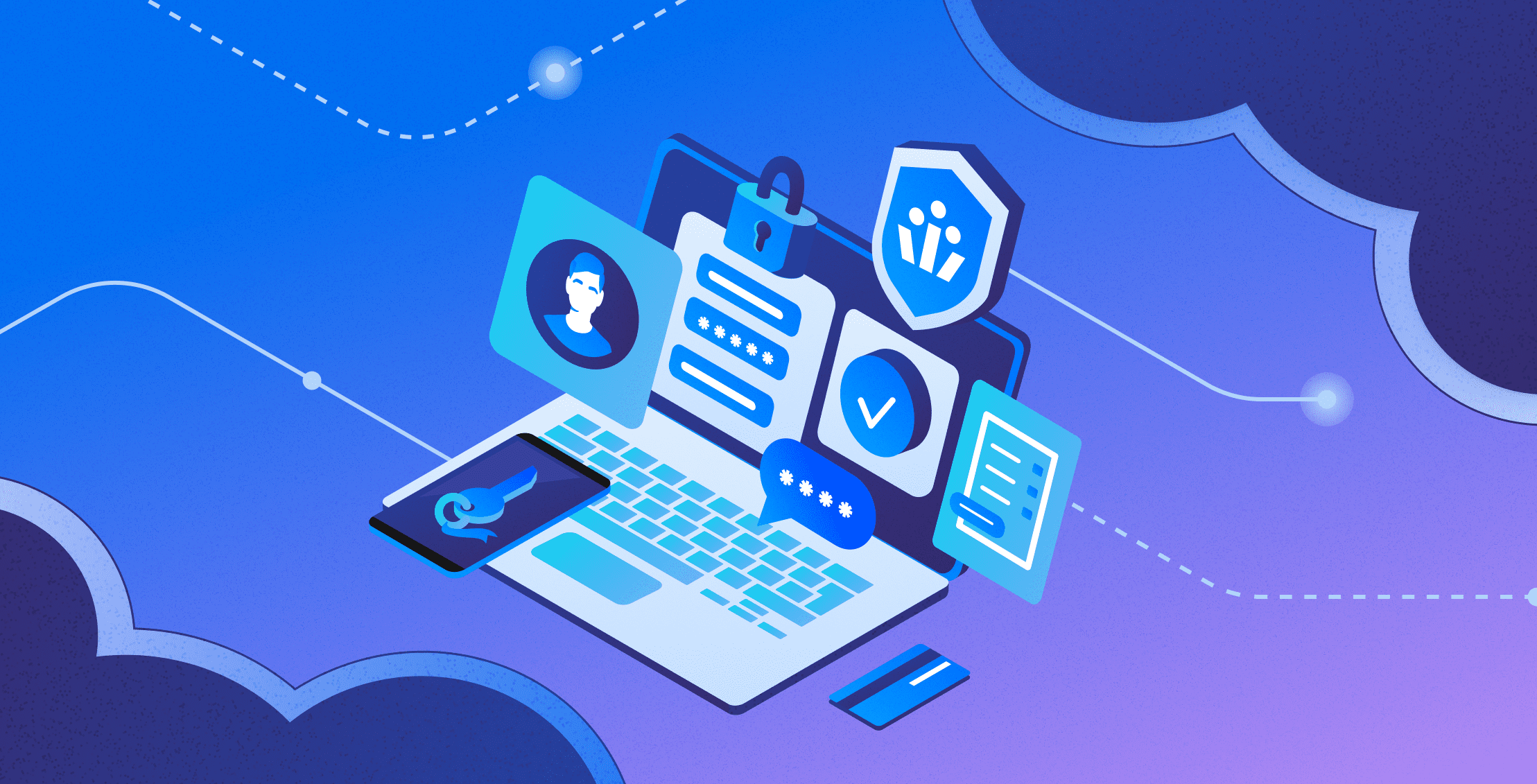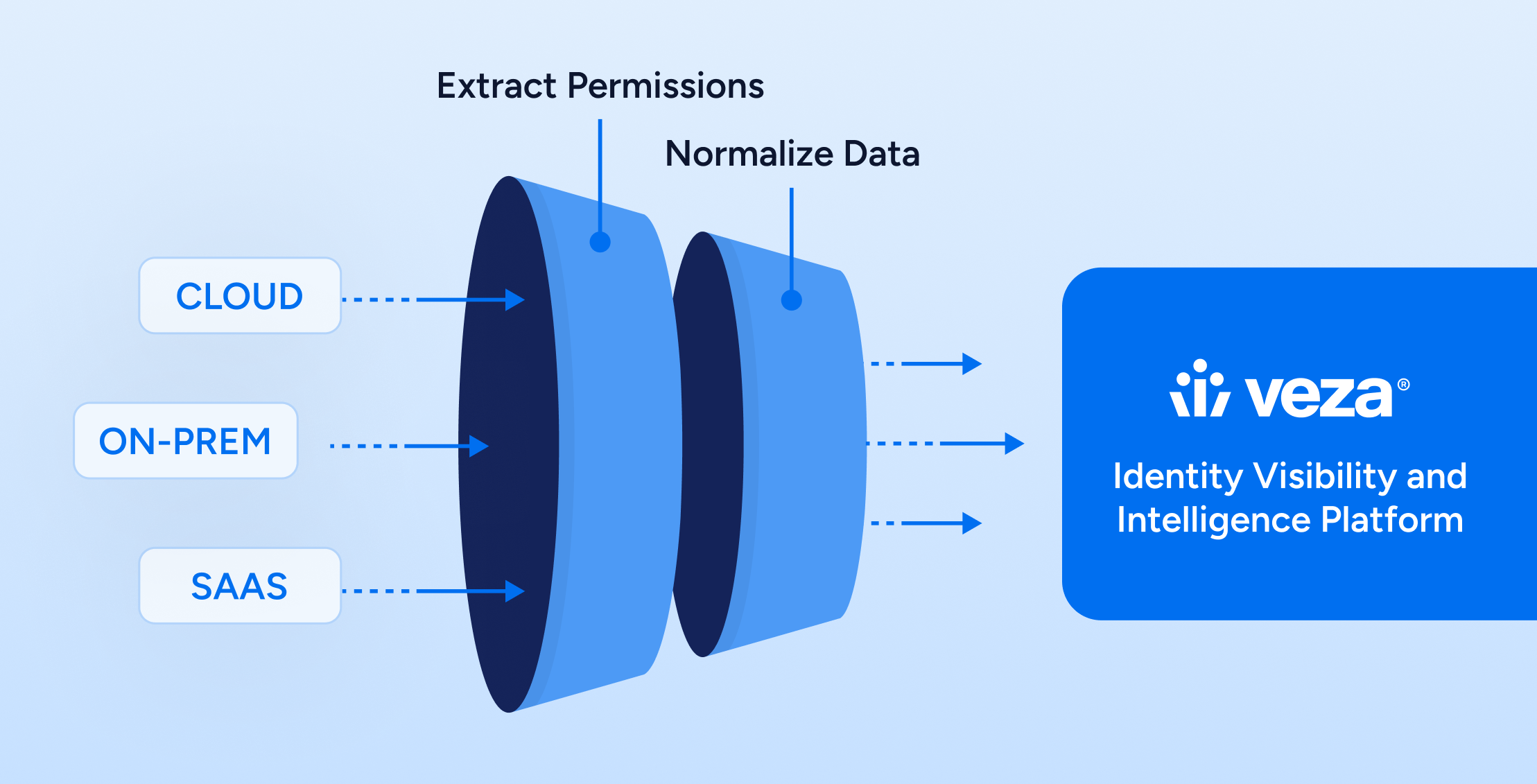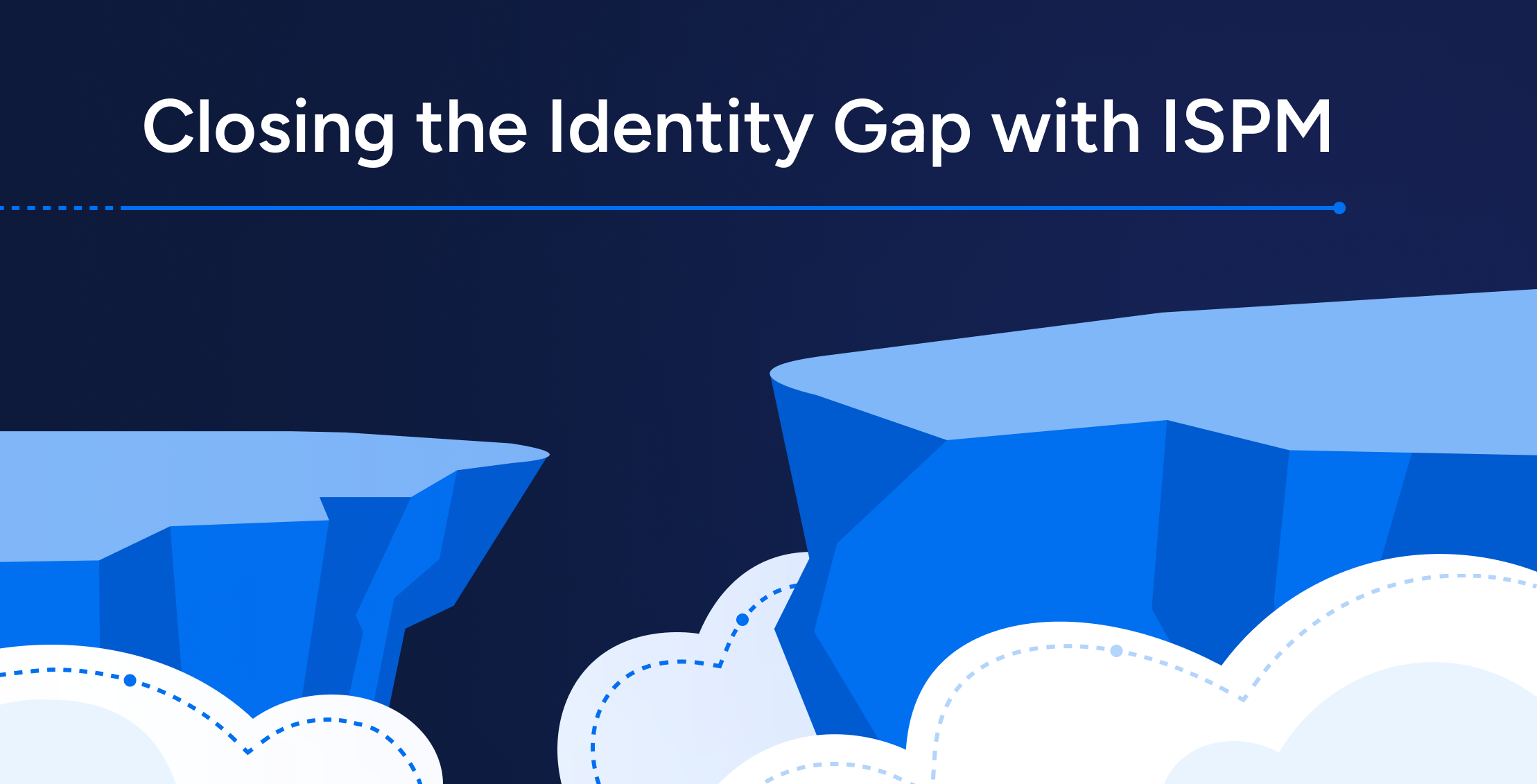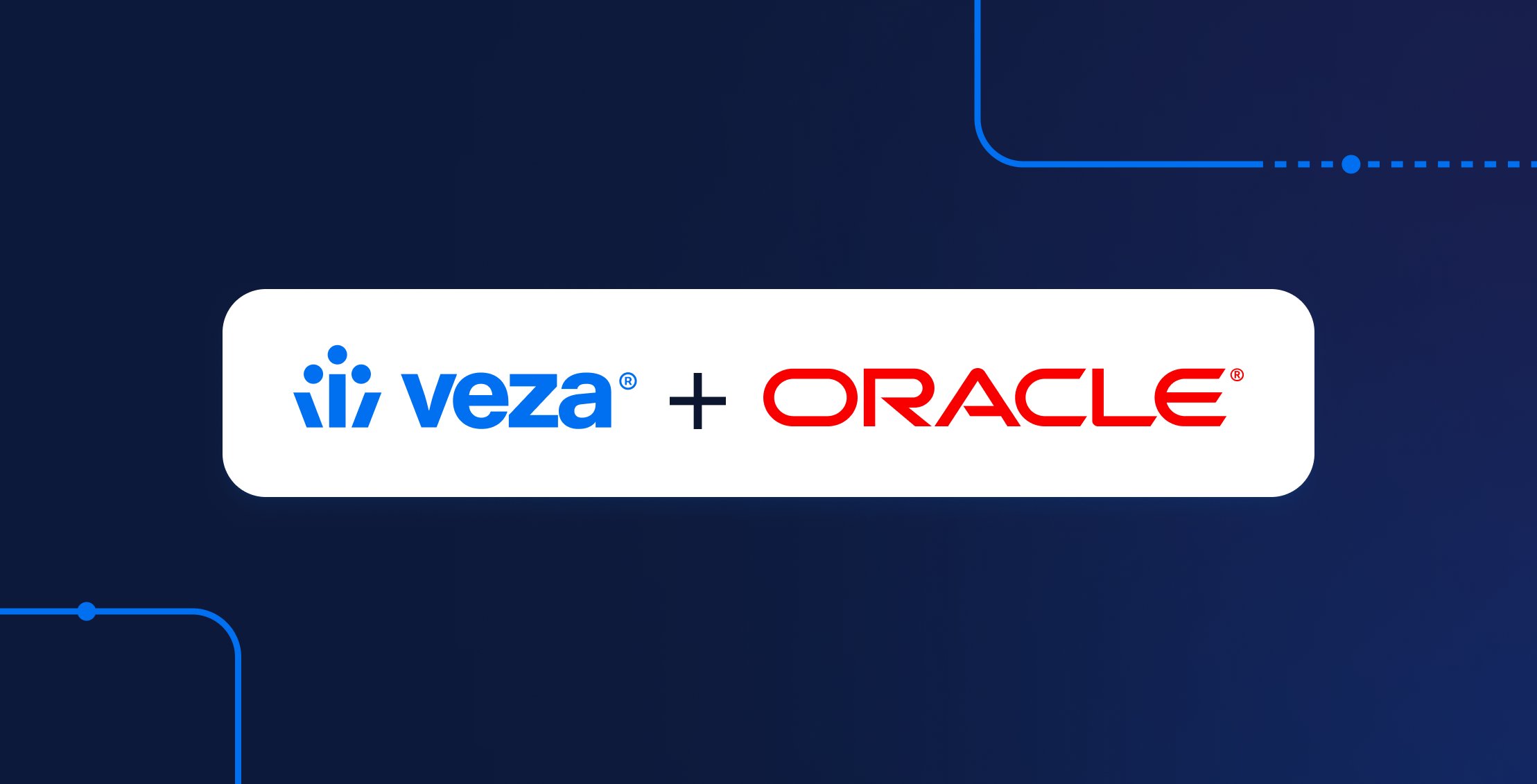
The importance of Identity Security has never been more pronounced in a world where 86% of breaches are traced back to stolen credentials and over 60% of compromise factors are linked to credentials.
With the increasing complexity of cloud environments, the rise of remote work, the proliferation of local admin accounts and identities, SaaS sprawl, and the growing automation of cyber threats, securing digital identities is essential to protect sensitive information and maintain operational integrity.
Yet, Identity Security has blind spots. Traditional Identity Governance and Administration (IGA) tools often cannot accurately reflect the dynamic and complex permission structures across the myriad of cloud and SaaS applications organizations use today. Similarly, while Privileged Access Management (PAM) solutions provide insights into the activities of known privileged users, they often lack visibility into the broader spectrum of identities and the privilege implicit in their permissions across an organization.
This critical gap in visibility and control underscores a fundamental flaw in traditional Identity Security strategies: the inability to capture the complete picture of permissions across all applications and systems. The evolving digital landscape, characterized by diverse and interconnected systems, demands a new approach that can ingest, analyze, and manage access metadata from every corner of an organization’s IT ecosystem.
This article explores identity security, its importance, and the challenges organizations face in securing digital identities. We’ll uncover the layers of identity security, from authentication and authorization to access management and beyond, and illustrate why a robust Identity Security framework–supported by a broader context of access governance–is vital for mitigating risk, ensuring compliance, and improving decision-making across the business.
What is Identity Security?
Identity Security is the combination of people, processes, and technologies that together protect organizations’ data from unauthorized access or misuse via identities. It ensures that only the right individuals can access the right resources, at the right times.
Effective Identity Security must address the challenge of verifying that only authorized individuals and entities can interact with specific systems and data, and enforcing the principle of least privilege: that identities should only be able to access the apps and data that are needed for their job.
Types of identities in Identity Security
A diverse array of identities populates the digital ecosystem, each playing a unique role in access management and security protocols. They include:
- Human identities: These are typically employees who require access to organizational resources. Human identities are typically managed through credentials like usernames and passwords, multi-factor authentication (MFA), and single sign-on (SSO) systems.
- Third-party vendor accounts: External partners, vendors, and contractors may need access to an organization’s systems, which introduces additional risk. Managing these accounts requires careful oversight to ensure they do not become a security vulnerability.
- Service accounts: Service accounts are non-human identities and require strict management to prevent unauthorized access. Used by applications or services to interact with each other, these accounts often possess elevated privileges, making their security paramount.
- Machine identities: Similar to service accounts, these are non-human identities used by machines to communicate with each other and access networks or databases. They can include IoT devices, servers, and automated scripts.
Identity Security example
The following scenarios illustrate how Identity Security principles can be applied in real-world contexts:
- Access management tools ensure employees only have the necessary permissions for their roles and typically align with the principle of least privilege.
- Monitoring and auditing access rights help businesses detect and respond to unauthorized or anomalous activities and protects against potential data breaches.
- Identity Security Posture Management (ISPM) assesses and enhances the security of identities across the infrastructure, ensuring compliance with regulatory requirements and mitigating vulnerabilities.
- Implementing MFA adds an extra layer of security beyond passwords to reduce the risk of unauthorized access.
The above examples aim to prevent unauthorized access and protect sensitive information by managing and securing identities intelligently and proactively.
Identity Security: related terms
As we delve deeper into Identity Security, defining the terminology that shapes its foundation is crucial. Each plays a pivotal role in securing digital identities.
What is a digital identity?
A digital identity is an online or networked identity adopted or claimed by individuals, organizations, or electronic devices. This identity is used during transactions or interactions in digital environments to identify and authenticate entities.
Digital identities are comprised of attributes or credentials, such as usernames, passwords, and biometric data, that distinguish one entity from another. Managing these identities is fundamental to ensuring secure access to digital resources and protecting against identity theft and fraud, but it isn’t always easy to do so.
Many organizations use Identity Providers (IdP) to manage multiple digital identities. Although these tools make it convenient for IT teams to provision access to dozens of SaaS apps across hundreds or thousands of users, they don’t deliver an Identity Security solution.
That’s because many apps (and crucially, new cloud infrastructure and data systems) are managed outside of Identity Providers, which makes it easier for an admin to configure access directly, resulting in what’s known as “shadow access,” or ungoverned permissions in apps and platforms outside the scope of an IdP.
For apps that are managed through IdPs, organizations may have some visibility on associated identities, but they still cannot see what data those users can access, edit, delete, and share within those apps.
What is identity protection?
Identity protection refers to strategies and technologies employed to protect an individual’s or entity’s identity information against theft, fraud, and other cyber threats. It involves encryption, multi-factor authentication, and continuous monitoring of identity-related activities.
The goal is to prevent unauthorized access to personal and organizational resources, ensuring that sensitive information remains secure from malicious actors.
Identity and Access Management (IAM)
Identity and Access Management (IAM) is a framework of policies and technologies ensuring that the right individuals can access the appropriate resources at the right times for the right reasons. IAM systems facilitate the management of digital identities, including the authentication and authorization of users and the roles and permissions assigned to them.
This framework is crucial for enforcing security policies, supporting compliance efforts, and minimizing the risk of unauthorized access.
How Identity Security works
To optimize Identity security, one must optimize authentication–understanding who a user is–and authorization–what the user can do. Of course, other important elements within Identity Security strategies ensure digital identities are protected.
Authentication
Authentication is the process of verifying the identity of a user or entity before granting access to systems and data. It’s the first line of defense in Identity Security, ensuring that individuals are who they claim to be.
Common methods of authentication include passwords, biometric verification (such as fingerprint or facial recognition), and multi-factor authentication, which combines two or more verification factors to enhance security.
Authorization
Once authenticated, authorization determines what resources a user can access and what actions they can perform. It involves assigning and enforcing permissions based on predefined policies, roles, and responsibilities. Authorization ensures that individuals have access only to the data and resources necessary for their job functions, adhering to the principle of least privilege.
But the problem with authorization is this: every application and platform has its own set of permissions, and in many cases, those permissions cannot be readily understood by someone who has limited experience with that particular system. For security teams to have a solid understanding of the permissions within each of their organization’s systems, they would need to have a system expert for every single application–which is just unrealistic.
At the same time, using roles and profiles to pool together individual permissions can weaken Identity Security because it often leads to over-permissioning, or the granting of too much access to users. And, pooling permissions together into roles and profiles also makes it difficult for security teams to manage who can do what with which data.
Access management
Based on the principle of least privilege, access management systems control how access is granted and restricted, emphasizing the need to provide users only with the access necessary to perform their duties.
This approach minimizes potential vulnerabilities by limiting the number of access points attackers could exploit.
Identity governance
Identity governance encompasses the policies, processes, and technologies used to manage and protect an organization’s digital identities and reduce access debt. It includes overseeing how identities are created, maintained, and removed, ensuring compliance with regulatory requirements and internal policies.
Effective identity governance helps organizations streamline access rights, manage risks, and achieve operational efficiencies.
Auditing & monitoring
Continuous auditing and monitoring are critical for detecting potential security breaches, unauthorized access, or anomalous activities. These processes involve tracking and analyzing access logs, user activities, and system changes to swiftly identify and respond to security incidents.
Organizations can better protect sensitive information and infrastructure by maintaining visibility over access and usage.
Education & training
Educating and training employees on the importance of Identity Security and best practices is crucial for strengthening an organization’s security posture. Awareness programs can help reduce the risk of social engineering attacks, phishing, and other cyber threats by informing individuals about the dangers and teaching them how to recognize and respond to potential security risks.
Why is Identity Security important?
Identity Security goes beyond mere access control, embedding itself into the fabric of cybersecurity strategies to protect against the ever-evolving threat landscape.
Protecting identities & data
The core function of Identity Security is to protect user identities, machine identities, and the data they access. By verifying and managing who has access to what, Identity Security systems ensure that sensitive information remains out of reach from unauthorized users, safeguarding against data breaches and identity theft.
Closing gaps within IAM
Identity Security fills critical gaps in IAM systems by providing a more nuanced and comprehensive approach to managing access. It addresses the limitations of traditional IAM solutions, integrating advanced features like behavioral analytics and AI to detect and respond to anomalies in real time.
Ensures compliance
Regulatory frameworks across various industries mandate stringent controls over access to sensitive data, including HIPAA, GDPR, SOX, PCI DSS, SOC 2, and more. Identity Security helps organizations comply with these regulations by enforcing access policies, conducting regular audits, and providing detailed reports on access patterns and permissions, thereby avoiding hefty fines, reputational damage, or even prison time.
Essential for Zero Trust
Adopting a zero-trust architecture means not automatically trusting anyone or anything just because they’re inside the organization’s network. Identity Security is essential for Zero Trust, as it continuously verifies the identity of users and the integrity of their access requests, ensuring that trust is consistently earned and verified. On its own, Zero Trust does not know what access an identity should have; that’s the realm of Identity Security.
Prevents serious data breaches & minimizes post-breach risks
Historically, companies have focused on security tools to help protect themselves from attackers. However, with the acceleration of ransomware and AI-backed cyber threats, security teams are beginning to realize that this approach is not enough. Organizations must treat breaches as inevitable and prepare accordingly to detect and respond to attacks when access is compromised, before it’s too late.
The best way to de-risk breaches is to apply the principles of Intelligent Access to enforce least privilege, monitor access drift over time, and ensure continuous compliance with security policies.
By quickly identifying and isolating compromised accounts, limiting the scope of access, and enabling swift remedial actions, Identity Security can reduce the time attackers spend within the system and the amount of data they can access.
Identity Security challenges for organizations
As organizations navigate the complexities of digital transformation, they may also encounter numerous challenges in maintaining robust Identity Security.
Increased usage of SaaS and cloud infrastructure
The surge in adoption of SaaS and cloud infrastructure has introduced new complexities in Identity Security. Each platform comes with its own set of access controls and user permissions, increasing the challenge of managing identities across a dispersed IT environment.
At the same time, using local accounts within these services can create blind spots where unauthorized access goes undetected, further complicating the security landscape. Without automation, organizations simply cannot keep pace with changing access needs.
As companies accumulate excessive permissions over time (called ‘access creep’ or ‘privilege drift’), it unnecessarily increases the attack surface for attackers and malicious insiders. However, excessive permissions are unfortunately unavoidable, whether granted by accident or unrevoked when employees leave. And when identity and security teams can’t see these permissions, they can’t manage them.
Determining what was compromised post-breach
After a security breach, identifying the extent of the compromise is a daunting task. Relying on manual processes or outdated Identity Security solutions complicates this process, making it difficult to quickly ascertain which identities were affected and what data was accessed.
This delay in response time can exacerbate the situation, leading to further vulnerabilities and potential data loss.
Meet the new standard in Identity Security with Intelligent Access
The significance of Identity Security cannot be overstated in the evolving digital world. However, the shift towards more sophisticated security strategies also highlights the shortcomings of traditional methods.
Ultimately, the future of Identity Security hinges on embracing Intelligent Access: an essential approach for protecting digital identities against an increasingly complex threat landscape.
Traditional identity systems have a fatal flaw. Nobody can see the reality of access.
Until Veza. Veza captures access metadata from all enterprise systems and organizes it into a unique graph, so you can finally answer: who can take what action on what data?
Veza brings visibility and control to all identities, human and non-human, across all systems, enabling key use cases like cloud entitlement management, privileged access monitoring, next-generation IGA, SaaS access governance, and data entitlement management.
Schedule your demo to modernize your IAM program and add critical Identity Security, learn more about the Veza platform, and discover how Veza can empower your organization to achieve a more secure, compliant, and efficient approach to secure access.





